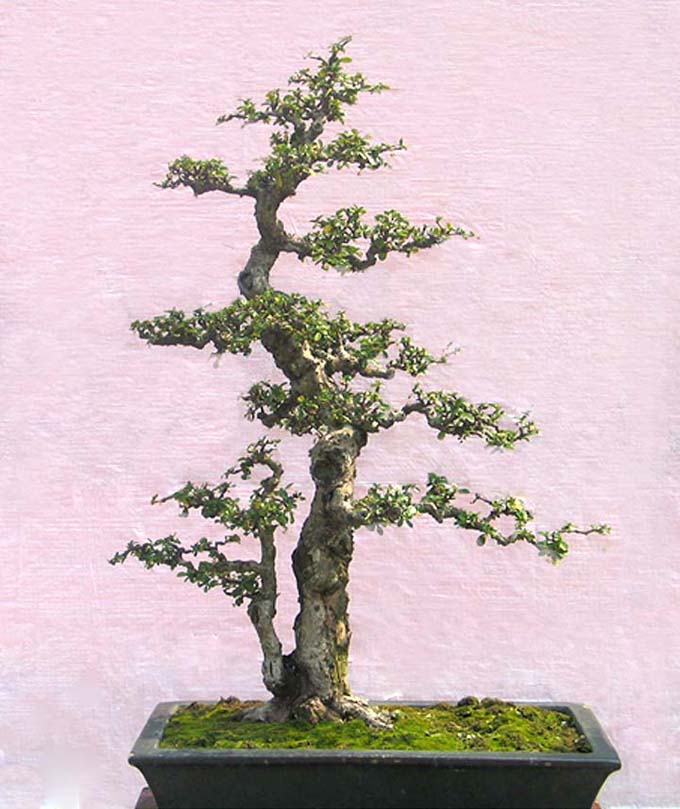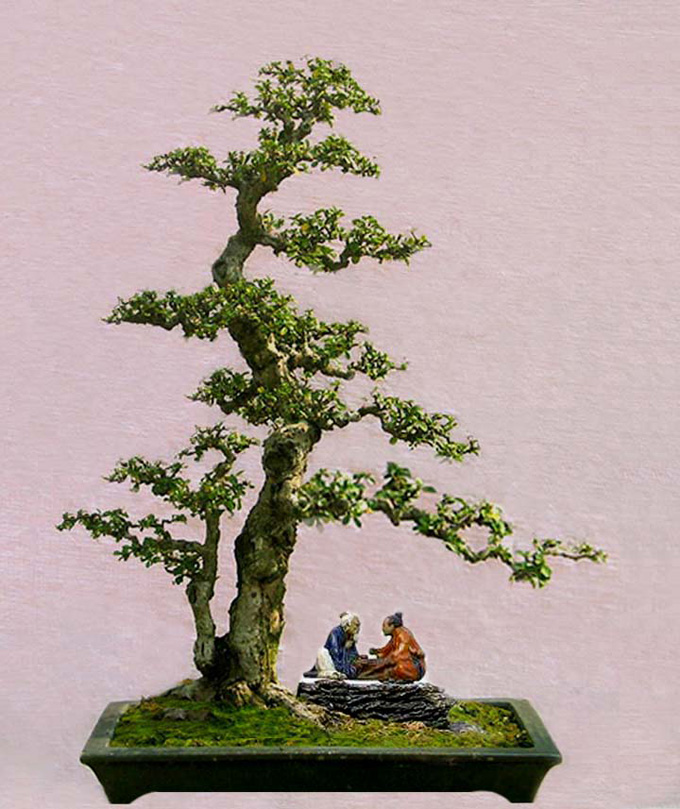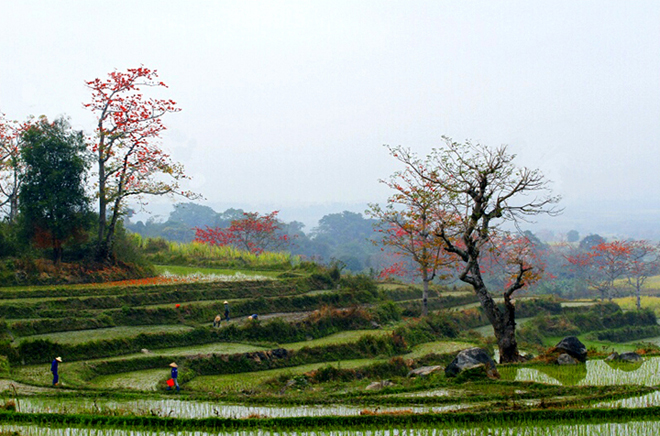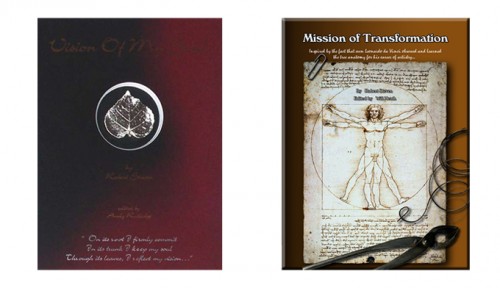 Sake fueled debate? Are these two old Chinese sages engaged in a raging (and perhaps intoxicated) philosophical debate? (Speaking of: Monday’s NYTimes has a somewhat interesting article/debate about Western vs non-Western philosophy for the two of you who might be interested in such things.) But I digress. What you are really looking at is a Robert Steven simulation of a tree that was submitted by Mr Zhang Bing for critique.
Sake fueled debate? Are these two old Chinese sages engaged in a raging (and perhaps intoxicated) philosophical debate? (Speaking of: Monday’s NYTimes has a somewhat interesting article/debate about Western vs non-Western philosophy for the two of you who might be interested in such things.) But I digress. What you are really looking at is a Robert Steven simulation of a tree that was submitted by Mr Zhang Bing for critique.
Singing Robert’s praises
We’ve been singing praises for Robert Steven’s bonsai, bonsai simulations and books for a long time. Here’s why; Robert provides insights about bonsai and especially Penjing that is unequaled. This insight is not simply theoretical; it’s backed up by Robert’s own creative bonsai and bonsai simulation skills. This critique provides one more example of these insights and skills.
 The original photo as submitted by Mr Zhang Bing.
The original photo as submitted by Mr Zhang Bing.
Robert Steven’s Critique
This Fukian-tea is a typical Chinese Lingnan bonsai (penjing) style, with a monopodial shape and a small root-sucker.
Lingnan penjing was strongly influenced by the shape of Bombax ceiba or Cotton tree, which grew in large numbers in the southern China area where Lingnan penjing was started.
Cotton trees have a very unique shape; they’re columnar when young, but the shape changes into a more rounded shape as they age, and even to a wide layered shape. The arrangement of the initial radial branches later forms unique foliage pad formations in irregular shapes. As a part of this, water-shoots or root-suckers often grow straight and parallel to the main trunk, creating unique twin or multiple trunks. This has inspired the Lingnan penjing artists in their creations, like the one we see here.
 This unique Cotton tree shape did not only inspire penjing artists, but also Chinese paintings, with their beautiful red flowers in the spring. Instead of being sympodial and wide shape like other deciduous trees, the apical and monopodial shape with irregular foliage makes cotton tree looks very charming and beautiful.
This unique Cotton tree shape did not only inspire penjing artists, but also Chinese paintings, with their beautiful red flowers in the spring. Instead of being sympodial and wide shape like other deciduous trees, the apical and monopodial shape with irregular foliage makes cotton tree looks very charming and beautiful.
 Here is another Chinese bonsai design, which is also strongly influenced by the Cotton tree shape. (This is an alternative simulation by Robert.)
Here is another Chinese bonsai design, which is also strongly influenced by the Cotton tree shape. (This is an alternative simulation by Robert.)
 The original tree (see second photo from top) as submitted by Mr Zhang Bing was well designed. However, in order to emphasize the Lingnan character and to create a better look, I changed the apex so that it looks more like a mature deciduous tree. The tree is slightly tilted to the right to improve the visual balance and the first branch is lengthened so that it flows and emphasizes the typical Lingnan character.
The original tree (see second photo from top) as submitted by Mr Zhang Bing was well designed. However, in order to emphasize the Lingnan character and to create a better look, I changed the apex so that it looks more like a mature deciduous tree. The tree is slightly tilted to the right to improve the visual balance and the first branch is lengthened so that it flows and emphasizes the typical Lingnan character.
A shallow pot creates a more nuanced effect. Then a figurine is placed to enhance the thematic message. Thematic nuance or so called the “Yi Jing” is very important in Chinese penjing, This is where the soul of the creation is found.
General comments
There is more than one way to design any bonsai and my critiques and recommended solutions might not always fit your taste and personal preferences, but I always try to give my opinion based on artistic and horticultural principles.
To understand my concepts better, please read my books Vision of My Soul and Mission of Transformation which are available at Stone Lantern.
My bonsai blog address : http://robert-steven.ofbonsai.org


The figurines are readily available and the range is huge in China.
In the south of China where I am living at some of the flower and plant (also lots of Bonsai and Penjing sellers) markets there are whole shops devoted to them.
Thanks Andrew. If you get a chance, check out our next post.
https://bonsaibark.com/2012/06/07/bougainvillea-bonsai-brilliant-or-a-little-too-brazen/